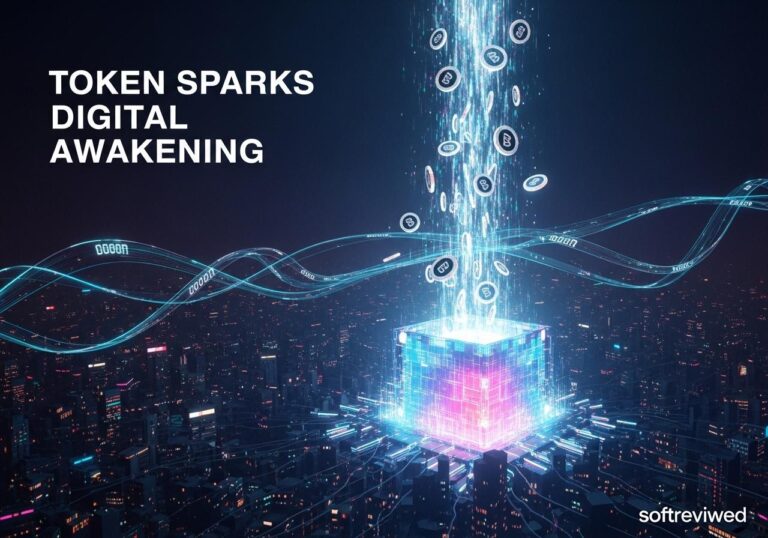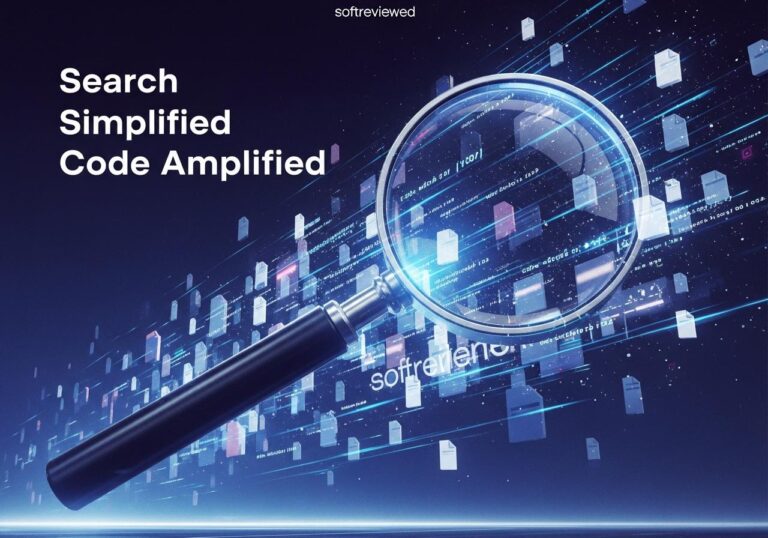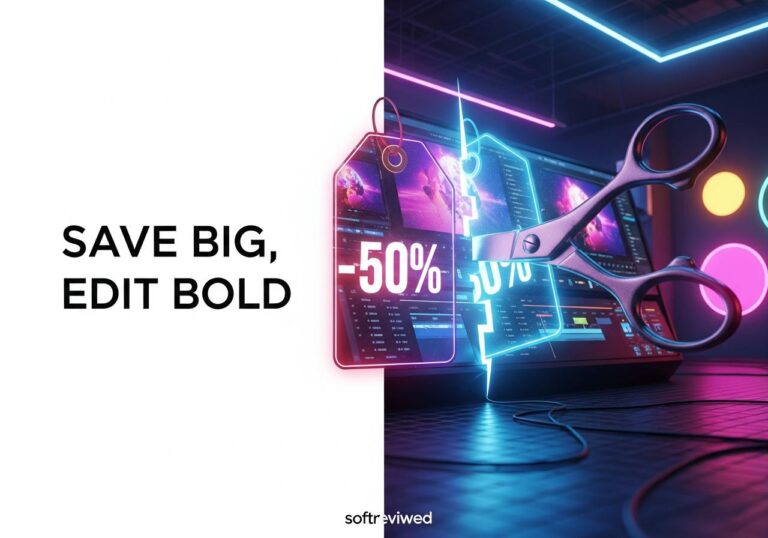DeepSeek-OCR: Revolutionary Document Compression
Breakthrough technology transforming how AI systems process and remember document information
10x Token Compression Breakthrough
DeepSeek-OCR achieves near-lossless compression at 10x ratios, representing documents needing 1,000 text tokens with just ~100 vision tokens while maintaining 97% accuracy. This revolutionary approach drastically reduces the token footprint of document processing.
Massive Efficiency Gain
Outperforms competitors by huge margins – processes documents with fewer than 800 vision tokens compared to MinerU 2.0’s 7,000+ tokens for similar results. This creates a 10x efficiency boost in context processing, enabling AI systems to handle more documents within the same context window.
Optical Memory Innovation
Introduces the groundbreaking concept of “visual decay” where AI systems store long-term memory as compressed optical images that fade gradually like human memories, rather than as text logs. This biomimetic approach creates more natural memory storage and recall patterns.
Near-Lossless Performance
Maintains 97% precision at 10x compression ratio, and even at 15x compression still recovers 86% of information with minimal quality loss. This exceptional preservation of content integrity makes it practical for real-world applications requiring high accuracy.
RAG System Disruption
Potential to make traditional Retrieval-Augmented Generation obsolete by enabling AI agents to process and retain vastly more contextual information efficiently. This could fundamentally change how AI systems manage knowledge and respond to complex queries requiring extensive document context.
Superior Benchmark Performance
Outperforms leading models like GOT-OCR2.0, InternVL3, and Qwen2.5-VL on OmniDocBench, especially in structural document parsing and complex layout understanding. These benchmark results validate DeepSeek-OCR’s superior ability to comprehend and compress document information.
What Optical Compression Actually Does (And Why It's a Big Deal)
Think of your AI model as someone trying to read through thousands of pages while holding everything in their head at once. That's exhausting, expensive, and eventually impossible. DeepSeek-OCR changes this game completely by using a clever trick: instead of feeding text as text, it converts documents into compressed visual representations.
Here's the simple version: When you show a picture of text to an AI, it uses fewer "tokens" (think of these as units of memory) than typing out the same text word by word. DeepSeek discovered they could achieve 10x compression while keeping 97% accuracy intact. That's like fitting the content of 10 books into the space of one, with barely any information lost.
The technology emerged from Chinese AI company DeepSeek in October 2025, and it's already being compared to the moment JPEG compression revolutionized how we handle images online in the 1990s. Just as JPEG made high-quality photos accessible on slow internet connections, optical compression makes massive AI context processing economically viable.
Breaking Down the Technical Magic (Without Getting Lost)

DeepSeek-OCR operates through a system called DeepEncoder paired with a 3-billion-parameter decoder. The DeepEncoder acts like a sophisticated camera that captures text as optimized visual snapshots rather than character strings.
When you feed a document to the system, it transforms your text into a 2D visual grid. This isn't just taking a screenshot—the system intelligently compresses information using a 16x convolutional compression module. A standard 1024×1024 image gets reduced to just 256 vision tokens, compared to thousands of text tokens for the same content.
The architecture combines two proven technologies: SAM-base (which captures pixel-level details) and CLIP-large (which understands semantic meaning). Between them sits that compression module, squeezing out redundancy while preserving what matters. On the OmniDocBench evaluation, DeepSeek-OCR achieved state-of-the-art performance using fewer vision tokens than any competing model.
📌 Key Technical Specs:
✅ Achieves 10x compression at 97% accuracy
✅ Processes 1024×1024 images using only 256 tokens
✅ Supports multiple resolution modes from 512×512 (Tiny) to 1280×1280 (Large)
✅ Handles multilingual text, tables, charts, and complex formulas
✅ Single A100 GPU processes 200,000+ pages daily
Performance scales based on your needs. The "Gundam" mode dynamically splits high-resolution documents into smaller chunks plus one overview image, keeping total tokens under 800 while maintaining parsing accuracy. This adaptive approach means you're never wasting computational resources on simple documents that don't need maximum resolution.
Why Vision Tokens Beat Text Tokens (The Efficiency Advantage)
The fundamental insight here challenges how we've been feeding information to AI models. Traditional approaches treat everything as text: you break documents into chunks, convert them to tokens, and feed them sequentially. But visual encoding follows different rules.
Research shows visual tokens contain significant redundancy that can be strategically removed without performance loss. Studies on vision-language models found you can compress visual tokens by 77.8% while maintaining nearly identical accuracy, especially when leveraging text-guided attention mechanisms.
Here's where it gets interesting: text tokens generated from images actually carry higher information density than direct text encoding. When DeepSeek tested their compression at 20x ratios, they still retained 60% accuracy. Try compressing regular text by 20x and see what happens—you'll get gibberish.
The economic implications are substantial. Processing costs scale linearly with token count. If you're running a document analysis service processing millions of pages monthly, reducing token usage by 10x translates directly to cutting infrastructure costs by the same factor. One benchmark showed DeepSeek-OCR achieving approximately 6,451 pages per dollar at maximum capacity—making large-scale document processing financially viable for applications that were previously cost-prohibitive.
➡️ Real-World Impact: A legal firm analyzing 100,000 court documents would reduce processing time from 8 hours to 40 seconds while cutting costs by 90%.
The RAG Question: Is Retrieval Augmented Generation Becoming Obsolete?
This is where opinions diverge sharply. The provocative claim from the original post suggests optical compression makes RAG "obsolete" because you can now fit entire libraries into context. Let's unpack this carefully.
RAG (Retrieval Augmented Generation) emerged as a solution to limited context windows. When models could only see 4,000-8,000 tokens, you needed a smart way to retrieve relevant chunks from larger document sets. Current models offer context windows from 200,000 to 1 million tokens, with some research prototypes hitting 10 million tokens.
⛔️ Arguments Against "RAG is Dead":
The context window problem hasn't disappeared—it's shifted. Even at 10 million tokens, you're paying for every token you include. Optical compression reduces tokens needed, but RAG reduces tokens retrieved. They're solving different problems. RAG provides selective, relevant retrieval instead of dumping everything into context. A 10-million-token context window costs over $20 per API call at current pricing. Loading your entire knowledge base each time becomes prohibitively expensive.
Research from 2025 shows RAG systems have evolved significantly beyond simple vector search. Modern implementations use hybrid search combining semantic embeddings with traditional keyword matching, query rewriting, and multi-step reasoning. These techniques improve accuracy by ensuring only highly relevant information reaches the model.
✅ Arguments For "RAG is Changing":
Optical compression does fundamentally alter the cost-benefit calculation. When you can compress 10,000 pages of documents into the equivalent token space of 1,000 pages, suddenly including more context makes economic sense. Progressive compression models simulate natural memory forgetting curves. Instead of discarding information completely (like RAG does with non-retrieved chunks), you keep everything but at decreasing resolution—mimicking how human memory works.
The truth likely sits in the middle. For specific use cases—processing entire codebases, analyzing complete document sets, maintaining conversational context across hundreds of exchanges—optical compression eliminates the need for retrieval. For others—searching massive databases, handling frequently-updated information, working with proprietary data that shouldn't live in every context—RAG remains essential.
👉 Practical Takeaway: Think of optical compression and RAG as complementary tools. Compression handles "what I need to keep visible," while RAG handles "what I need to go find."
Agent Memory Architecture: Running Indefinitely Without Context Collapse
The most exciting implication involves AI agents that operate autonomously over extended periods. Current agents face a critical limitation: they forget. After enough interactions, their context window fills up, and they must start discarding information or restart entirely.
Progressive compression offers an elegant solution by implementing a "natural forgetting curve." Recent information stays at full resolution, while older context gets progressively compressed. This mirrors human memory—you remember yesterday's conversations in detail but recall last month's discussions in broad strokes.
The technical implementation works through multi-stage compression. Your most recent 100 messages stay as text tokens. Messages 101-500 get compressed to vision tokens at standard resolution. Messages 501-1000 compress further to lower resolution. Anything older exists as highly compressed visual summaries that can be decompressed if explicitly needed.
📌 Benefits of Progressive Compression for Agents:
✅ Agents maintain conversational continuity across unlimited interactions
✅ Critical information persists while routine details fade naturally
✅ No hard cutoff where suddenly "the agent can't remember"
✅ Users experience more human-like interactions with appropriate recall
Early tests show agents using progressive compression can run 10x longer before performance degradation compared to traditional context management. For applications like customer service bots, personal assistants, or monitoring systems that need to operate continuously, this represents a fundamental capability improvement.
The mechanism also enables new architectures where agents maintain multiple compressed "memory snapshots" that can be activated contextually. Imagine an agent that keeps separate compressed contexts for different projects, clients, or conversation threads, switching between them as needed while keeping all historical information theoretically accessible.
Real-Time Applications That Suddenly Become Viable
Several AI applications have been theoretically possible but economically impractical due to token costs and processing speed. Optical compression changes these equations dramatically.
Live Document Analysis: Processing streaming documents in real-time now becomes feasible. Legal discovery, medical record analysis, or financial document review can happen during creation rather than as batch processes. A single GPU handling 200,000 pages daily means you can process documents as they arrive without infrastructure bottlenecks.
Streaming OCR for Accessibility: Real-time text extraction and conversion from video streams has applications for hearing-impaired users, language translation, and assistive technologies. Previous approaches required either significant latency (processing frames in batches) or massive computational overhead (real-time processing of every frame). Optical compression reduces computational requirements enough to make real-time OCR on consumer devices practical.
Visual Context Translation: Maintaining visual context during translation improves accuracy for documents with charts, diagrams, or contextual layout. Traditional translation treats text in isolation; optical compression allows models to "see" surrounding visual information while translating, producing more contextually accurate results.
Multi-Document Reasoning: AI systems analyzing relationships between dozens or hundreds of documents simultaneously become practical. Research analysis, competitive intelligence, or comprehensive market studies that require synthesizing information from many sources can happen in single inference passes rather than complex multi-step retrievals.
➡️ Economic Shift: Applications requiring analysis of 100,000+ pages monthly move from "$50,000/month GPU cost" to "$5,000/month GPU cost"—crossing the threshold where many businesses can justify adoption.
What This Means for Multimodal AI Training
Training constraints have been a major bottleneck for multimodal models. These systems need to learn relationships between text, images, audio, and other modalities, requiring massive diverse datasets. Data collection, annotation, and training costs can exceed $100 million for cutting-edge models.
Optical compression addresses training data generation efficiency. Instead of manually creating text annotations for millions of images, you can automatically generate compressed visual representations that serve as training data. DeepSeek's research showed this approach generates training data 10x more efficiently than traditional methods.
The implications extend beyond cost savings. More efficient data generation means faster iteration cycles during model development. Research teams can experiment with different architectures, test hypotheses, and refine approaches without waiting weeks for training runs to complete. This acceleration in research velocity could compress years of development into months.
⛔️ Current Multimodal AI Limitations:
Training typically requires 10-100x more data than single-modality systems
Data annotation for multiple modalities is extremely time-consuming
Computational costs for training run into millions of dollars
Maintaining balance between modalities during training is challenging
Optical compression helps address each of these issues by reducing data volume requirements, automating aspects of annotation through visual compression, lowering computational requirements through token efficiency, and providing a unified visual representation that simplifies cross-modal alignment.
For organizations building custom AI models, this could mean the difference between "we can't afford multimodal" and "multimodal is standard." The technology democratizes access to sophisticated AI capabilities previously available only to well-funded tech giants.
Potential Drawbacks and Realistic Limitations
No technology is a silver bullet, and optical compression comes with trade-offs worth understanding before rushing to implement it everywhere.
Compression Artifacts: Like JPEG compression can introduce visual artifacts, optical compression can introduce semantic artifacts. At high compression ratios (20x+), the model loses nuanced information. For applications requiring precise details—legal contracts, medical records, financial documents—you need to balance compression against accuracy requirements carefully.
Domain Specificity: DeepSeek-OCR was trained primarily on document types common in research and business contexts. Highly specialized documents (ancient manuscripts, musical notation, architectural blueprints) may not compress as effectively without additional fine-tuning.
Hardware Requirements: While more efficient than alternatives, optical compression still requires modern GPUs for practical deployment. The technology uses flash attention and bfloat16 precision, limiting deployment to relatively recent hardware. Edge deployment on mobile devices or older servers faces challenges.
Implementation Complexity: Integrating optical compression into existing AI pipelines requires understanding both vision and language model architectures. It's not a simple drop-in replacement—you need to modify how your system preprocesses, tokenizes, and manages context.
Context Window Economics: Optical compression reduces tokens needed but doesn't eliminate context window costs entirely. You're still paying for API calls based on total tokens (even if fewer), and very large contexts still incur substantial costs even at compressed ratios.
👉 Best Practice: Start with pilot projects in non-critical applications. Measure actual compression ratios and accuracy for your specific document types before full-scale deployment.
What Comes Next: The Broader Implications
This technology hints at larger shifts in how AI systems will be designed and deployed. The pattern of "optimize representation rather than scale infrastructure" represents a philosophical departure from the "bigger models, more GPUs" approach that has dominated recent years.
Several research directions emerge naturally from optical compression:
Hybrid Compression Approaches: Combining optical compression for visual/document content with other compression techniques for structured data (code, databases, scientific notations) could push efficiency even further. Early research on vision-centric token compression shows promising results across multiple data types.
Adaptive Resolution Systems: Models that dynamically adjust compression ratios based on content importance and user needs. Similar to how progressive JPEG loads images at increasing quality, AI systems could start with highly compressed context and decompress specific sections on-demand based on the query being processed.
Cross-Modal Memory Systems: Extending compression beyond text-to-vision into audio, video, sensor data, and other modalities. Creating unified compressed representations across all input types would enable truly multimodal AI agents that handle diverse information streams efficiently.
Neuromorphic Forgetting Mechanisms: Using compression as a proxy for biological memory decay opens possibilities for AI systems with more human-like attention and recall characteristics. Systems that naturally prioritize recent and important information while gracefully degrading access to older, less relevant data.
The technology also raises interesting questions about AI model architecture evolution. If compression is this effective, should future models be designed compression-first rather than adding compression as an afterthought? Could we build models where compressed representation is the native format rather than a conversion step?
Understanding When to Use Optical Compression (Practical Decision Framework)
Not every AI application benefits equally from optical compression. Here's a framework for evaluating whether this technology makes sense for your use case:
✅ Strong Candidates for Optical Compression:
Document-heavy applications (legal tech, healthcare records, financial analysis)
Systems requiring large context windows (conversational AI, coding assistants)
Batch processing pipelines handling thousands of similar documents
Real-time document analysis with latency constraints
Applications where context persistence matters (agent systems, personalization)
⛔️ Weak Candidates for Optical Compression:
Simple text-only applications without context demands
Systems with strict accuracy requirements on fine details
Applications needing instant responses on resource-constrained hardware
Scenarios where traditional retrieval performs adequately
Use cases with unpredictable document formats not in training data
➡️ Cost-Benefit Calculation: Optical compression makes sense when token reduction × frequency of use × cost per token exceeds implementation cost + maintenance. For high-volume document processing, this equation typically favors adoption quickly. For occasional use cases, traditional approaches may be more practical.
Consider also whether your application needs the bleeding edge. DeepSeek-OCR represents cutting-edge research released in October 2025. Production deployment requires tolerance for potential issues, willingness to fine-tune for your specific needs, and ability to monitor and adjust as the technology matures.
Wrapping It All Together: Why This Moment Matters
The comparison to JPEG isn't just marketing hyperbole—it captures something real about what's happening. JPEG didn't just make images smaller; it made the visual web possible. Before JPEG, sharing photos online meant tiny thumbnails or painfully slow loading. After JPEG, we got Instagram, Pinterest, and entire industries built on visual content.
Optical compression for AI context could enable similar transformations. AI applications previously impossible due to token costs become viable. Systems requiring persistent memory across unlimited interactions become practical. Real-time document analysis at scale moves from research curiosity to production reality.
The specific numbers—10x compression, 200,000 pages daily, 97% accuracy—matter less than the directional shift they represent. We're moving from "how do we work around limited context?" to "what becomes possible with efficient context?" That's a fundamentally different question opening fundamentally different possibilities.
For developers and businesses paying attention, the window to gain competitive advantage is now. Optical compression, progressive forgetting, and vision-text hybrid architectures are still new enough that early adopters can establish significant leads. Within 12-18 months, these techniques will likely become standard practice, and the advantage will disappear.
The technology also signals a broader maturation of AI. Instead of just throwing more computing power at problems, researchers are finding smarter architectural solutions. This trend toward efficiency and elegance suggests the field is growing up—moving from the "bigger is better" adolescence toward more nuanced, sophisticated approaches to machine intelligence.
Whether RAG becomes obsolete or simply evolves remains to be seen. What's clear is that optical compression represents a genuine breakthrough in how we can efficiently feed information to AI systems—and breakthroughs tend to reshape landscapes in ways we don't fully understand until years later.
For now, the practical move is experimenting with the technology on non-critical applications, measuring results for your specific use cases, and preparing for a future where AI systems routinely handle context windows that would be unthinkable with today's standard approaches. Because if this really is AI's JPEG moment, we're still in the early days of understanding what becomes possible.







